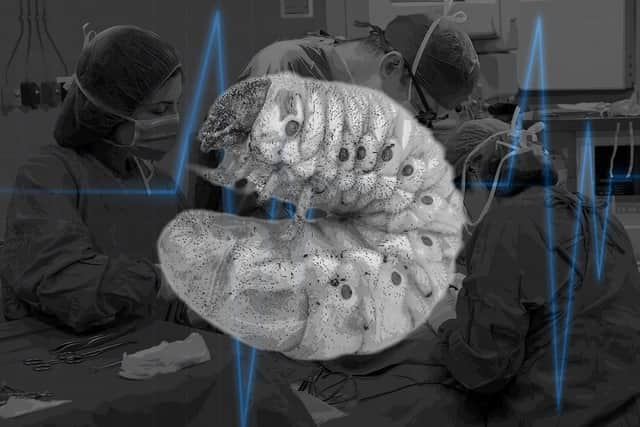What is larval therapy? Use of maggots to treat wounds and when NHS may use them - explained
and live on Freeview channel 276
Advances in modern medicine means there’s now a wealth of treatment options available for a variety of illnesses, ailments and diseases. But did you know maggots can be used to treat certain medical conditions such as gangrene? Here’s what you need to know about maggot therapy.
What is maggot therapy?
Maggot therapy uses maggots, usually of the green-bottle fly. They are introduced into a wound to remove dead or infected tissue, and they can also be used to maintain a clean wound.
Advertisement
Hide AdAdvertisement
Hide AdThe therapy works by removing dead tissue and any associated bacteria. In most instances they will improve the condition of a wound and allow healing to begin.
How long has maggot therapy been used for?
The technique has been used for centuries, but was reintroduced into modern medicine by doctors who found that maggots are able to cleanse wounds more rapidly than conventional dressings.
How does maggot therapy work?
The maggots that are applied to wounds are very small, usually only a few millimetres in length. However, during the treatment they will increase in size as they clean the wound, growing to a maximum of 12mm.
Larvae physically feed on dead tissue and release special chemicals into the wound that then break down any dead tissue into a liquid form that the maggot can easily remove and digest.
Advertisement
Hide AdAdvertisement
Hide AdThe actively feeding larvae also take up bacteria during this process, which are then destroyed within their gut. The process can often clean a wound within just a few days.
Yamni Nigam, professor of healthcare science at Swansea University, told BBC Radio 4 that one of the main things maggots can do is “disinfect” wounds, so if a person has a chronically infected wound the maggots can “debride” dead tissue. This means they clean the “slough” of the wound which “needs to be cleared before a wound can progress to heal,” Prof Nigam added.
There are two methods of application which are usually used. This first method is a BioBag dressing, where the maggots are sealed within a finely woven net pouch dressing containing foam, which helps the maggot to grow. The BioBag maggots remain sealed within the dressing throughout the treatment.
The second method is free range maggots, where they are applied directly onto the wound and retained within a special dressing system.
Advertisement
Hide AdAdvertisement
Hide Ad

When might it be used?
The NHS said maggot therapy may be used instead of conventional surgery to remove the dead tissue of certain wounds, including in cases of gangrene.
Gangrene is a serious condition where a loss of blood supply causes body tissue to die. It can affect any part of the body but typically starts in the toes, feet, fingers and hands. It can occur as a result of an injury, infection or a long-term condition that affects blood circulation.
The website said certain types of fly larvae are ideal for this because they feed on dead and infected tissue but leave healthy tissue alone. “They also help fight infection by releasing substances that kill bacteria and stimulate the healing process,” the NHS said.
Maggots used for larval therapy are specially bred in a laboratory using eggs that have been treated to remove bacteria. The maggots are then placed on the wound and covered with gauze, under a firm dressing, which keeps them on the wound. After a few days, the dressing is cut away and the maggots are removed.
Comment Guidelines
National World encourages reader discussion on our stories. User feedback, insights and back-and-forth exchanges add a rich layer of context to reporting. Please review our Community Guidelines before commenting.
